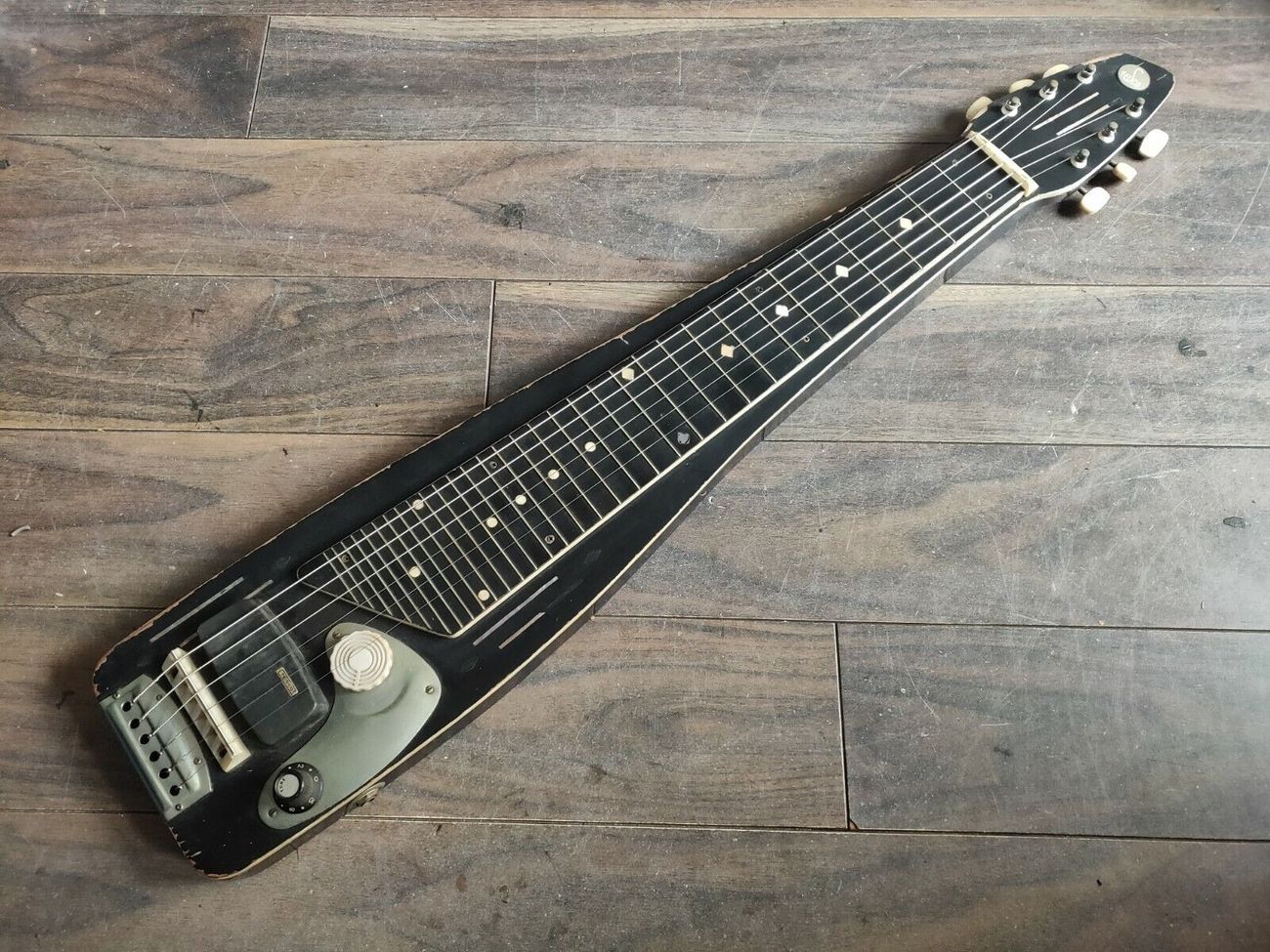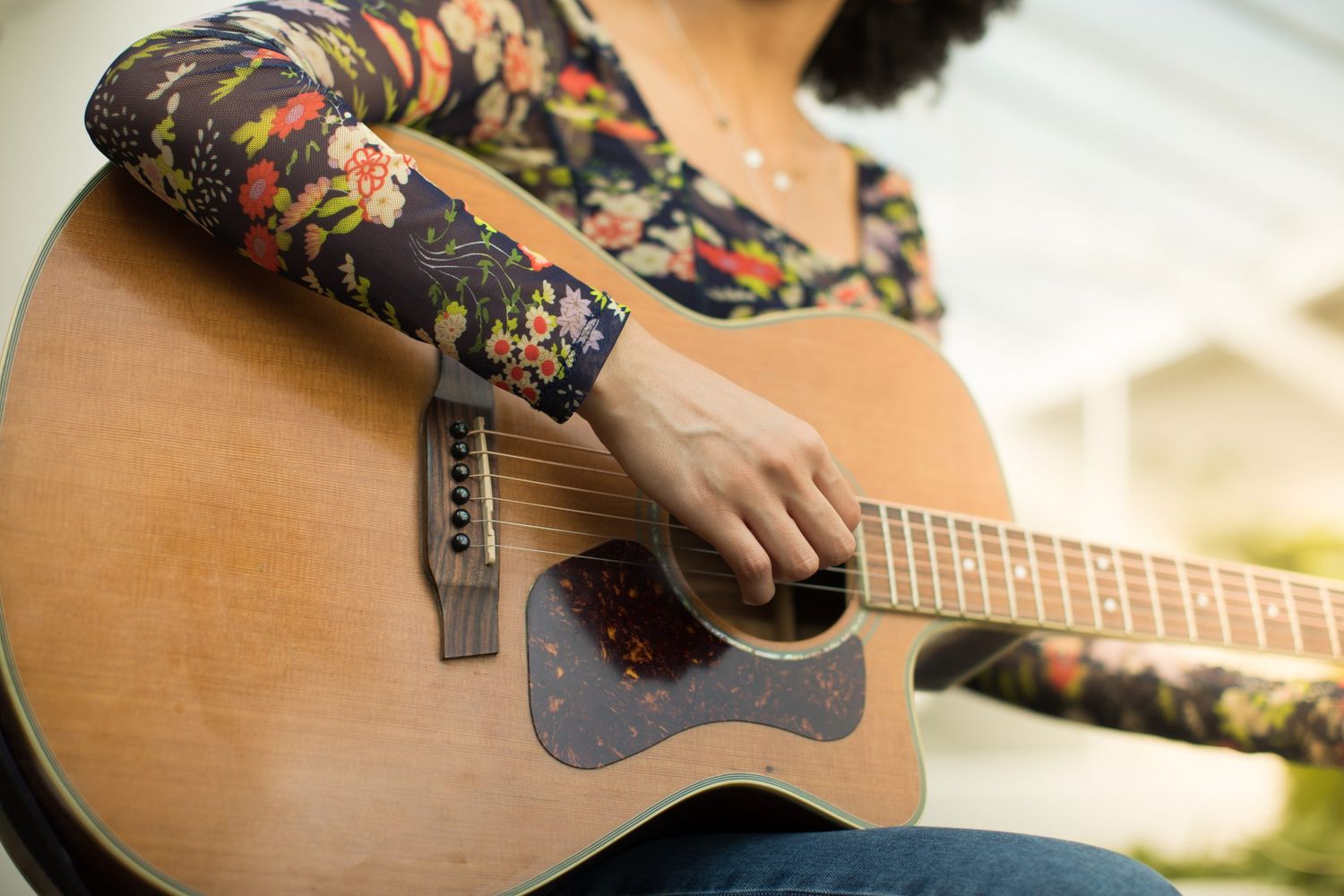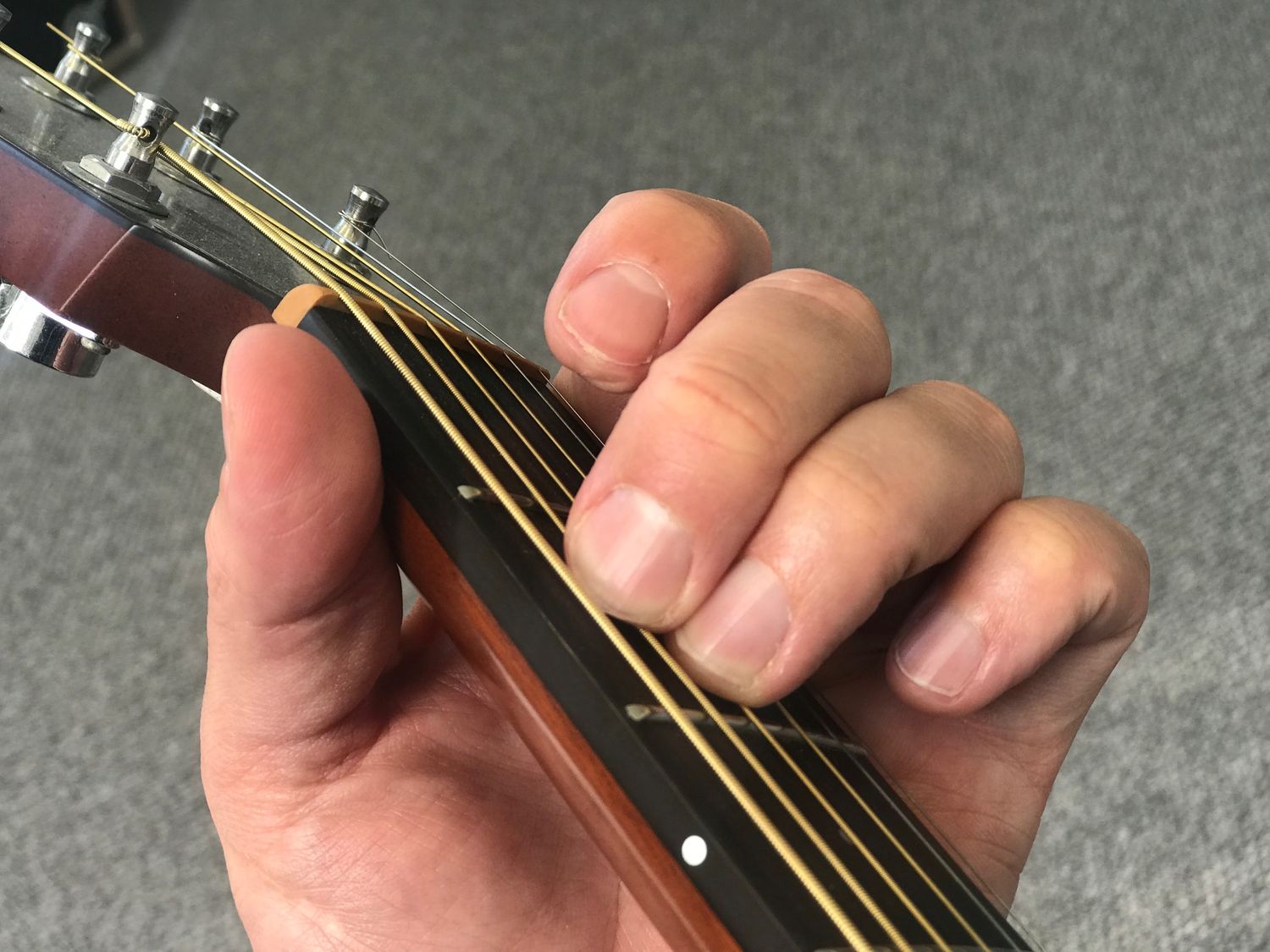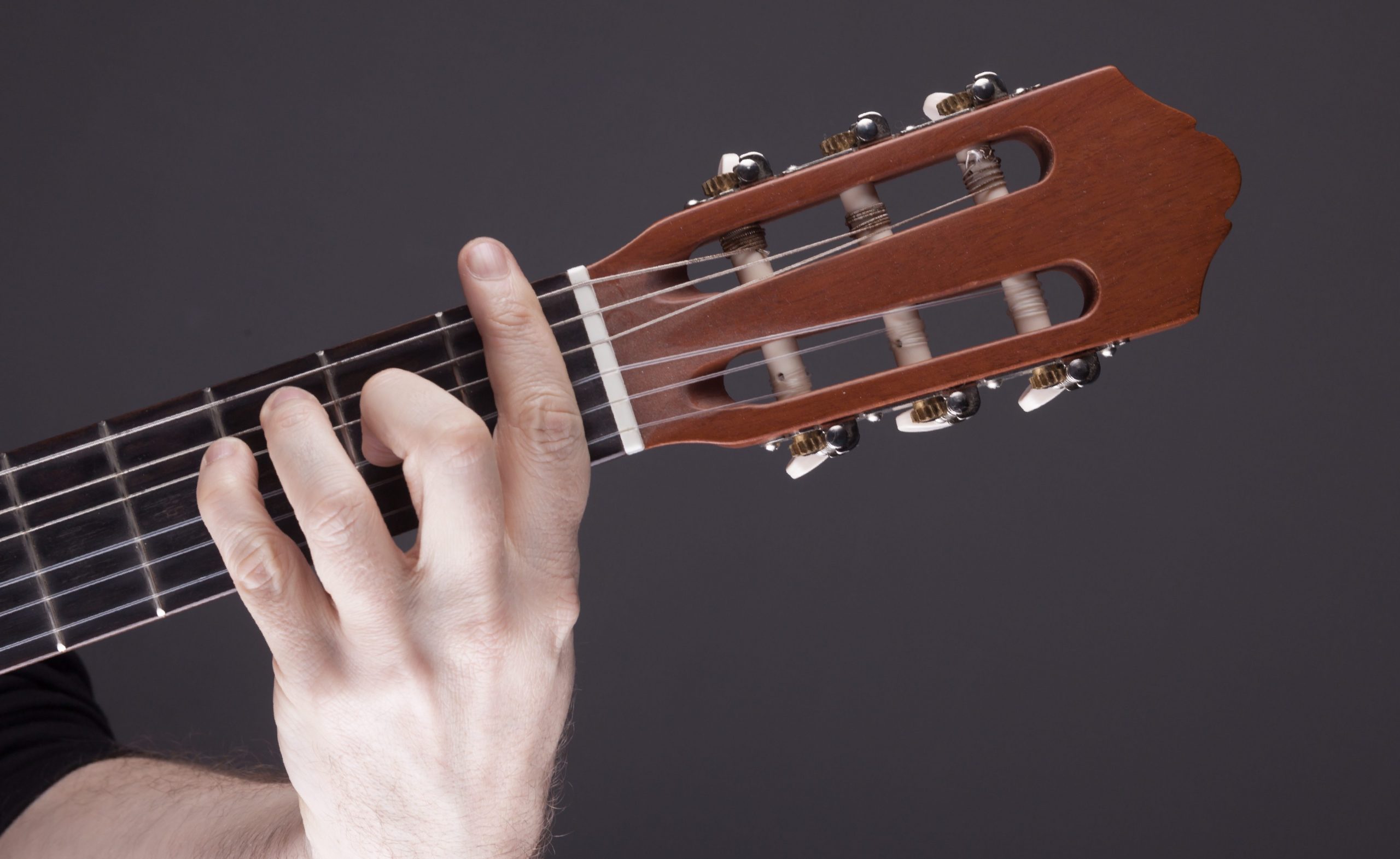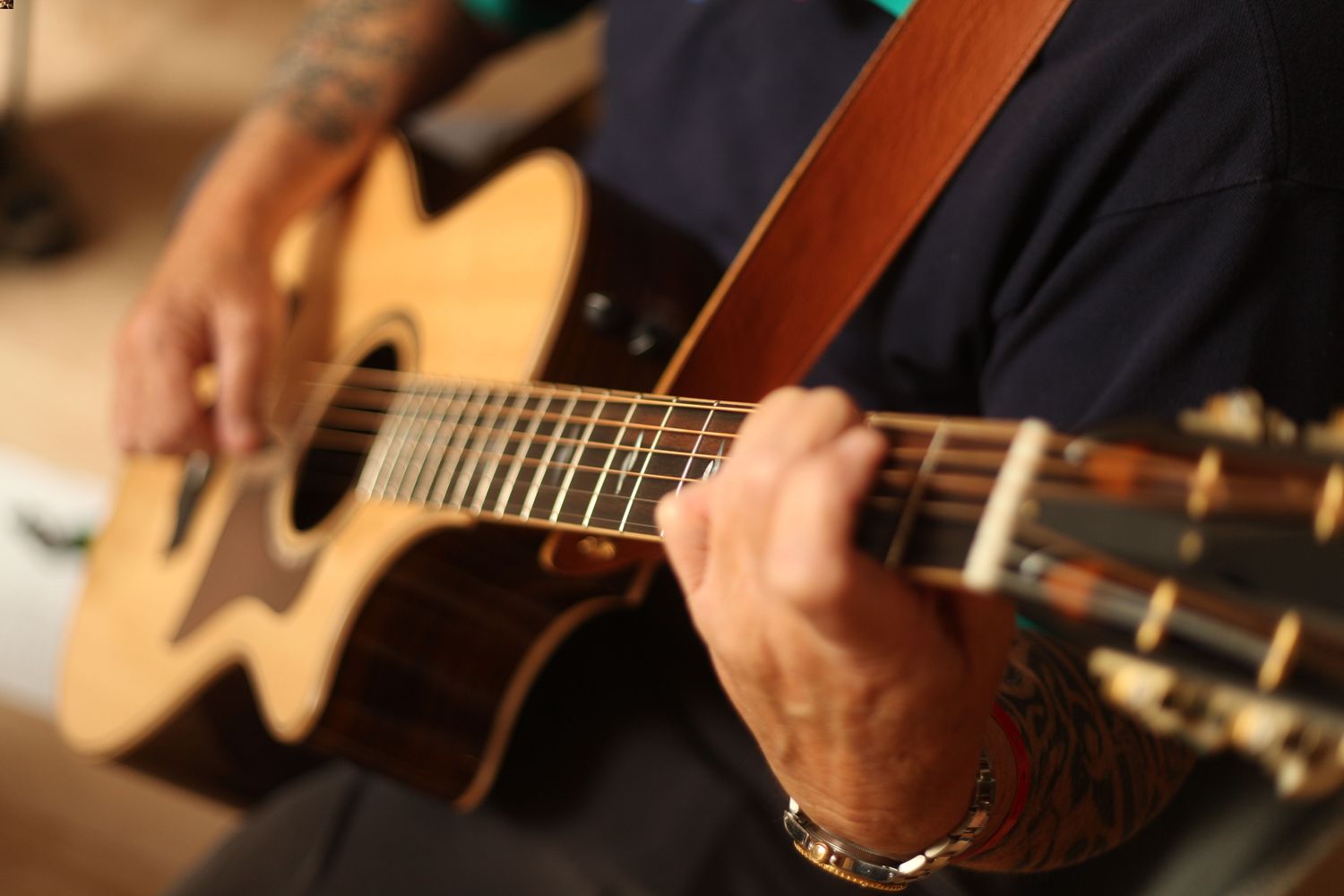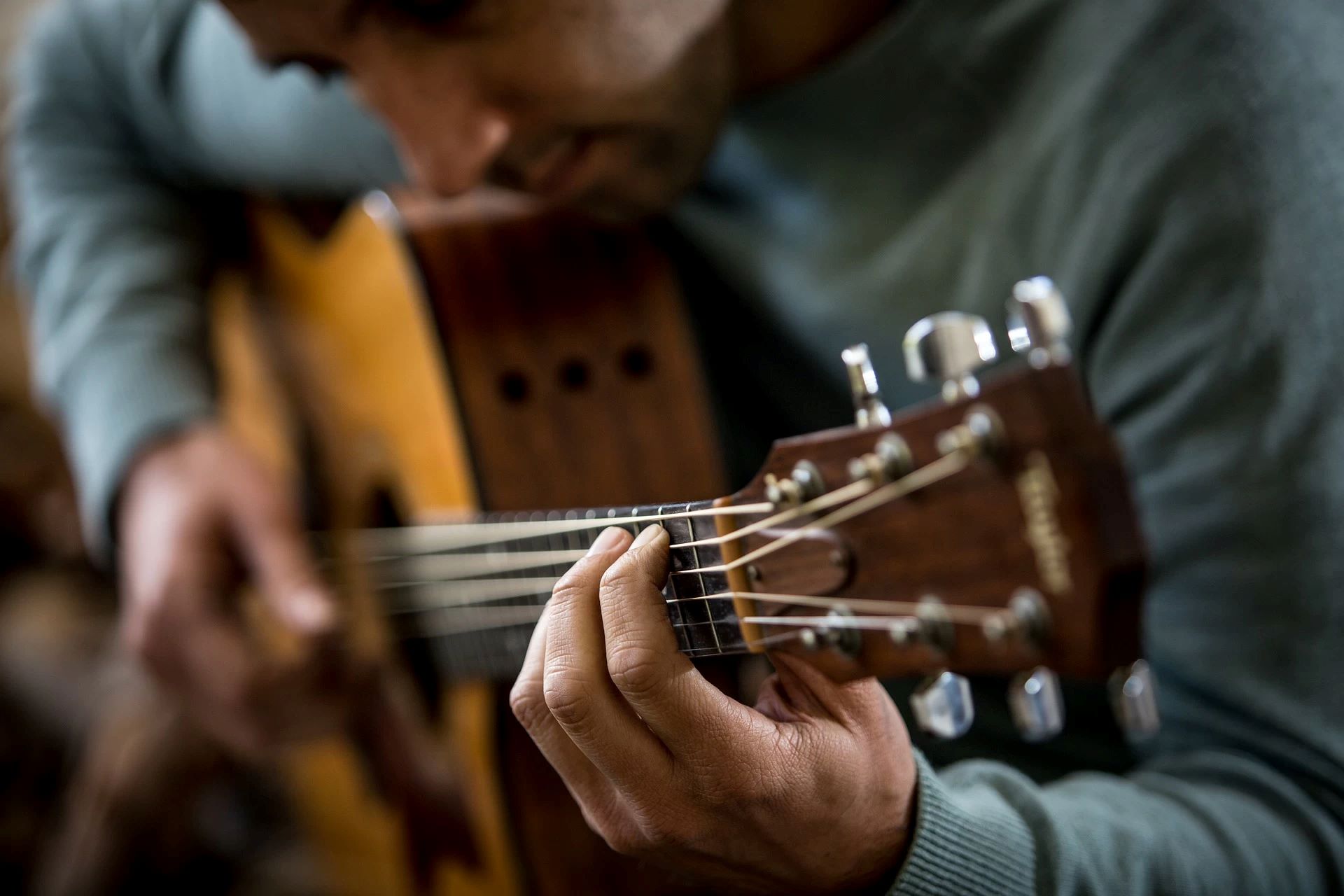

Folk
How To Play Folk Music On The Guitar
Modified: February 15, 2024
Learn how to play folk music on the guitar with our step-by-step guide. Discover essential techniques and chords to master this popular genre.
(Many of the links in this article redirect to a specific reviewed product. Your purchase of these products through affiliate links helps to generate commission for AudioLover.com, at no extra cost. Learn more)
Table of Contents
Introduction
Folk music is a beautiful and rich genre that has been passed down from generation to generation. It is deeply rooted in culture and history, telling stories of community, love, and struggle. Playing folk music on the guitar allows you to connect with the traditions and emotions that make this genre so special. Whether you’re a beginner or an experienced guitarist, learning to play folk music can be a rewarding and enjoyable experience.
In this article, we will explore the world of folk music and provide you with a comprehensive guide on how to play folk music on the guitar. We’ll cover everything from understanding the essence of folk music to choosing the right guitar, tuning it, and mastering basic techniques. We’ll also dive into playing open chords, strumming patterns, fingerpicking techniques, and exploring folk rhythms. Furthermore, we’ll guide you in learning common folk guitar songs, adding melodies and solos, and even offer some tips for improvisation.
Whether you’re drawn to the gentle melodies of American folk, the foot-stomping beats of Celtic folk, or the soulful tunes of traditional folk from around the world, this article will equip you with the knowledge and techniques to play and connect with the heart and soul of folk music.
So grab your guitar, tune it up, and let’s embark on this musical journey into the enchanting world of folk music!
Understanding Folk Music
Folk music is a genre that reflects the cultural identity and experiences of a particular group of people. It is often associated with traditional and acoustic instruments, heartfelt storytelling, and a strong sense of community. Folk music can encompass a wide variety of styles, including traditional folk songs, ballads, protest songs, and even contemporary folk music.
One of the key characteristics of folk music is its connection to oral tradition. Many folk songs have been passed down through generations, with each rendition adding its own unique touch. This means that there are often multiple versions of the same song, with regional variations and personal interpretations.
While folk music originated as a way for people to share stories and express their emotions, it has also served as a medium for social and political commentary. Many folk songs carry powerful messages about social injustices, war, and the struggles of everyday life. This aspect of folk music has made it a popular genre for protest and activism.
When it comes to playing folk music on the guitar, it’s important to understand the essence and spirit of the genre. Folk music is often characterized by its simplicity and sincerity. It’s not about flashy guitar solos or complex arrangements. Instead, it’s about creating a connection with the listener through honest and heartfelt performances.
While there are no hard and fast rules when it comes to playing folk music, there are certain qualities and techniques that can help you capture the essence of the genre. These include using open chords, incorporating fingerpicking patterns, and experimenting with different strumming styles.
In the next sections, we’ll delve into the practical aspects of playing folk music on the guitar, including choosing the right instrument and mastering the basic techniques. So let’s continue our musical journey and uncover the secrets of playing folk music on the guitar!
Choosing the Right Guitar
When it comes to playing folk music, choosing the right guitar is crucial. The guitar you select will have a significant impact on the sound and feel of your playing. There are a few factors to consider when making your decision.
Firstly, you’ll need to decide between an acoustic or an electric guitar. While folk music can be played on either, acoustic guitars are typically the instrument of choice for this genre. Acoustic guitars produce a warm and resonant sound that complements the simplicity and authenticity of folk music. They also don’t require an amplifier, making them more portable and suitable for intimate performances.
Next, consider the body shape and size of the guitar. Folk music is often associated with smaller-bodied guitars, such as parlor or concert-sized instruments. These guitars are comfortable to play and produce a balanced tone that suits the style. However, if you prefer a larger-bodied guitar, such as a dreadnought, it can still work well for folk music, providing a richer and more robust sound.
Another important consideration is the tonewood used in the construction of the guitar. Different tonewoods have distinct characteristics that contribute to the overall sound. Mahogany is a popular choice for folk guitars, as it produces warm and focused tones. Spruce is another common tonewood, known for its clarity and responsiveness. Ultimately, the tonewood choice will depend on your personal preference and the sound you’re aiming for.
Additionally, pay attention to the neck profile and the action of the guitar. The neck profile refers to the shape and thickness of the neck. Try out different neck profiles to find the one that feels comfortable in your hand. The action, on the other hand, refers to the distance between the strings and the fretboard. Lower action makes it easier to play barre chords and complex fingerpicking patterns, while higher action can provide better resonance and avoid buzzing. Find the right balance that suits your playing style.
Lastly, consider your budget. While there are guitars available at various price points, it’s important to invest in a guitar that offers good quality and durability. Look for reputable brands that have a track record of producing reliable and well-crafted instruments.
Remember, finding the perfect guitar is a personal journey. Take your time to try out different guitars and listen to how they sound. Ultimately, choose a guitar that not only feels comfortable to play but also resonates with you on an emotional level. A guitar that inspires you will undoubtedly enhance your enjoyment and connection to the folk music you play.
Tuning the Guitar
Before you start playing folk music on the guitar, it is essential to ensure that your instrument is properly tuned. Tuning your guitar not only ensures that you have a harmonious sound but also enables you to play along with other musicians or recordings accurately. There are a few different methods you can use to tune your guitar:
- Using a Tuner: One of the most accurate and convenient ways to tune your guitar is by using an electronic tuner. Simply clip the tuner onto the headstock of your guitar and pluck each string. The tuner will detect the pitch of the string and indicate whether it needs to be tuned higher or lower. Adjust the tuning pegs until the tuner shows that the string is in tune. Repeat this process for all six strings, starting from the thickest (lowest pitched) string to the thinnest (highest pitched) string.
- Tuning by Ear: If you don’t have a tuner available, you can tune your guitar using the strings as a reference. Start by tuning the low E string (the thickest string) to a reference pitch from another instrument or a reliable tuning source. Once the low E string is in tune, you can tune the rest of the strings relative to it. For example, to tune the A string, play the open A string and then match the pitch with the fifth fret of the low E string. Repeat this process for the remaining strings.
- Using Online Tuning Tools: If you have an internet connection, there are various online guitar tuning tools available. These tools play the reference pitches for each string, and you can adjust your guitar accordingly. Simply pluck each string and compare it to the sound played by the online tool, tuning up or down as necessary.
Regular tuning of your guitar is essential to maintain good intonation and ensure that your playing sounds accurate and in tune. It is recommended to tune your guitar every time you pick it up to play, as environmental factors, temperature, and humidity can cause the strings to go out of tune.
A well-tuned guitar not only improves the overall sound but also allows you to focus on your playing, expression, and musicality. So take the time to tune your guitar properly before diving into the world of folk music, and you’ll be on your way to creating beautiful melodies that resonate with the soul of the genre.
Basic Guitar Techniques
Before delving into specific folk guitar techniques, it’s important to master some basic guitar techniques that form the foundation for playing any genre. These fundamental techniques will assist you in creating a solid and versatile playing style. Here are a few key techniques to focus on:
- Fretting: Fretting is the act of pressing down on the strings against the frets to produce clear notes. Place your fingertips just behind the desired fret, not on it, and apply enough pressure to produce a clear sound. Be sure to avoid muting adjacent strings with your fretting hand.
- Picking or Plucking: Picking or plucking is the action of using your picking hand (usually the right hand for right-handed players) to strike or pluck the strings. Experiment with different pick types and techniques (using a pick, fingerpicking, or a combination of both) to find what feels comfortable and produces the desired sound for your folk playing.
- Strumming: Strumming involves sweeping your picking hand across the strings with either your fingers or a pick to produce a rhythmic sound. Start by practicing simple downstrokes and upstrokes on open strings, gradually increasing your speed and accuracy. Experiment with different strumming patterns to add texture and dynamics to your playing.
- Hammer-ons and Pull-offs: Hammer-ons and pull-offs are techniques used to create smooth transitions between notes. A hammer-on is when you use your fretting hand to “hammer” a finger onto the string, producing a new note without plucking the string again with your picking hand. A pull-off is the opposite, where you use your fretting hand to “pull off” a finger from a higher note to a lower note, allowing the lower note to sound without plucking the string again. Practice these techniques slowly at first to build strength and accuracy.
- Slides: Sliding involves moving your fretting hand up or down the neck of the guitar while maintaining continuous contact with the string. This technique adds a smooth and expressive element to your playing. Start with small slides and gradually increase the distance you slide to explore different musical effects.
- Muting: Muting is the act of dampening the strings to prevent unwanted noise or ringing. There are various methods for muting, such as lightly touching the strings with the palm of your picking hand or using your fretting hand to mute unused strings. Muting is particularly important when playing folk rhythms with percussive elements.
Remember, mastering these basic techniques takes time and practice. Take it slow, focus on precision and clarity, and gradually increase your speed and complexity. By building a solid foundation in these fundamental techniques, you’ll be well-equipped to explore the specific techniques used in folk music and create your own unique folk guitar style.
Playing Open Chords
Open chords are a fundamental aspect of guitar playing, and they form the basis for many folk songs. Open chords are chords that utilize open strings (strings that are not fretted) along with fretted notes to create a chord shape. These chords are relatively easy to play and provide a rich, full sound that is commonly heard in folk music. Here are a few popular open chords to get you started:
- G major: Place your second finger on the third fret of the low E string, your third finger on the third fret of the B string, and your fourth finger on the third fret of the high E string. Strum from the low E string down to the high E string, making sure each note rings clearly.
- C major: Utilize your first finger to fret the first fret of the B string. Strum from the A string down to the high E string, again ensuring each note sounds clean.
- D major: Position your second finger on the second fret of the G string, your third finger on the third fret of the B string, and your first finger on the second fret of the high E string.
- E minor: Use your second finger to fret the second fret of the A string and strum from the low E string down.
- A major: Place your second finger on the second fret of the D string, your third finger on the second fret of the G string, and your first finger on the first fret of the B string. Strum from the A string down.
- D7: Similar to the D major chord, add your first finger to the first fret of the high E string, creating a bluesy sound often heard in folk music.
Remember to position your fingers close to the frets and apply enough pressure to produce clear notes. Take it slow, strum each chord individually to ensure evenness and accuracy, and gradually increase your speed as you become more comfortable. It’s also helpful to practice transitioning between these open chords to develop smooth chord changes.
As you gain confidence with these open chords, you can explore additional open chord shapes and variations to expand your folk guitar repertoire. By mastering these basic open chords, you’ll be able to play a wide range of folk songs and accompany yourself or other musicians with ease.
Strumming Patterns
Strumming patterns are an essential element in folk guitar playing as they add rhythm and groove to your performance. Strumming patterns dictate the pattern and direction in which you strum the guitar strings. They can range from simple and steady to more complex and intricate patterns, depending on the song and the desired feel. Here are a few common strumming patterns used in folk music:
- Downstrokes: One of the simplest strumming patterns involves strumming down with your pick or fingers across all the strings. This pattern is often used in slow, ballad-like folk songs or as a starting point for beginners to get comfortable with strumming.
- Downstrokes and Upstrokes: This pattern involves alternating between downstrokes and upstrokes. Start with a downstroke and follow it with an upstroke. This pattern can be used in various tempos and adds a bit more dynamic to your strumming.
- Common Time: The common time pattern, also known as the 4/4 strumming pattern, is widely used in folk music. It consists of four beats in each measure, with the first and third beats emphasized. Try strumming a downstroke on the first beat and an upstroke on the third beat, while lightly strumming on the second and fourth beats.
- Boom-Chick: This pattern is commonly used in folk and country music. It involves playing a bass note on the first and third beats, followed by a strumming pattern on the second and fourth beats. For example, you can play the root note of the chord with your thumb or the palm of your hand on the first and third beats, and then strum the remaining strings with your fingers or a pick on the second and fourth beats.
- Swing Strum: The swing strum pattern, also known as the “boom-chicka” pattern, adds a syncopated and swinging feel to your playing. It involves emphasizing off-beats and creating a rhythmic bounce. Try strumming down on the first and third beats while lightly strumming up on the second and fourth beats.
Experiment with different strumming patterns to find what suits the style and mood of the song you’re playing. Listen to recordings of folk songs to develop a sense of the strumming patterns used and how they contribute to the overall sound. Remember, strumming patterns are not set in stone, and you can modify them or create your own variations to add your personal touch to the music.
As you practice strumming patterns, pay attention to your wrist and arm movement. Keep your wrist loose and relaxed, allowing for a smooth and even strumming motion. Start practicing at a slower tempo and gradually increase your speed as you feel more comfortable.
Remember, strumming patterns are a powerful tool in creating the rhythm and feel of a song. With practice and experimentation, you’ll be able to enhance your folk guitar playing and bring the songs to life with rhythmic precision and a captivating groove.
Fingerpicking Techniques
Fingerpicking is a versatile and expressive technique commonly used in folk guitar playing. It involves using your fingers to pluck the strings individually, creating melodic patterns, and adding depth to your sound. Fingerpicking allows you to simultaneously play the melody, harmony, and rhythm on the guitar, giving your playing a fuller and more intricate texture. Here are a few fingerpicking techniques to explore:
- Thumb-Index-Pinky: This classic fingerpicking pattern involves assigning each finger a specific string to pluck. Use your thumb to pluck the bass notes on the lower strings (E, A, and D), your index finger to pluck the third string (G), and your pinky to pluck the high E string. Practice plucking the strings individually using this pattern and gradually increase your speed.
- Travis Picking: Named after the renowned fingerstyle guitarist Merle Travis, Travis picking is a popular technique used in folk and country music. It involves alternating between bass notes played with the thumb and melody notes played with the fingers. Start by plucking the bass note with your thumb on the lower strings, followed by plucking the higher strings with your index, middle, and ring fingers in succession.
- Arpeggios: Arpeggios involve playing the notes of a chord one at a time instead of strumming them together. Using your fingers, pluck the strings individually in a specific order to create an arpeggio pattern. Experiment with different fingerpicking patterns and the order in which you pluck the strings to create melodic arpeggios.
- Hybrid Picking: Hybrid picking combines the use of a pick and your fingers to create a unique and versatile sound. Hold the pick with your thumb and index finger while using your remaining fingers to pluck the strings. This technique allows you to blend the warmth of fingerpicking with the attack of using a pick, giving you more options for expression and variation.
- Thumb-Strum: In this technique, you use your thumb to play the bass notes as you would in fingerpicking, but instead of using your fingers to pluck the higher strings individually, you strum them in a simultaneous motion. This creates a rhythmic and percussive effect, somewhat similar to a strumming pattern.
Practice these fingerpicking techniques slowly and focus on accuracy and control. Start with simple chord progressions and gradually progress to more complex patterns as you become more comfortable. It’s also helpful to study fingerpicking patterns from folk songs you admire to gain inspiration and develop a deeper understanding of the technique.
Remember, fingerpicking is a skill that requires patience and practice, but it yields beautiful and intricate results. As you explore different fingerpicking techniques, you’ll discover new ways to express yourself and create captivating melodies and harmonies on your guitar.
Playing Folk Rhythms
Rhythm is an integral part of folk music, adding a lively and engaging element to your guitar playing. In folk music, rhythms can range from simple and steady to intricate and syncopated. Mastering folk rhythms will not only enhance your ability to accompany songs but also give your playing a distinctive and infectious groove. Here are a few key aspects to consider when playing folk rhythms:
- Steady Tempo: Keeping a steady tempo is crucial in folk music. Whether you’re playing a gentle ballad or an up-tempo folk tune, maintaining a consistent rhythm is essential. Make use of a metronome or practice with a backing track to develop your sense of timing and internalize the rhythm.
- Root Notes and Bass Strumming: Emphasizing the bass notes of the chords helps to establish the foundation of the rhythm. Use your thumb or a combination of thumb and fingers to pluck the lower strings, or employ a bass strumming technique where you strum the lower strings with a downstroke while lightly strumming the higher strings with an upstroke.
- Varied Strumming Patterns: Experiment with different strumming patterns to create unique and captivating rhythms. Strumming patterns like the common time (down, down-up, down-up) or the swing strum (down, up-down, down-up) can add a distinct feel to your playing. Adapt the strumming pattern to match the mood and tempo of the song you’re playing.
- Accents and Dynamics: Adding accents and dynamics to your rhythm can bring more depth and character to your playing. Accent certain beats by strumming with extra force or using palm muting techniques. Experiment with playing softer or louder to create dynamic variations within the song.
- Percussive Elements: Folk music often incorporates percussive elements to enhance the rhythmic drive. Incorporate techniques such as tapping the body of the guitar, slapping the strings, or using a percussive thumb-thumb-strum technique to add rhythmic interest to your playing. These percussive elements can simulate drums and percussion instruments, enriching the overall sound.
When playing folk rhythms, listen to recordings of folk songs or live performances to internalize the characteristic rhythmic patterns. Focus on the strumming hand and pay attention to how the guitarist maintains a consistent groove, changing strumming patterns as the song progresses.
It’s important to practice regularly to develop your rhythm skills. Start with simpler rhythms and gradually work on more complex patterns as you become more comfortable. Be patient with yourself, as mastering folk rhythms may take time and repetition. Remember that creating a solid and infectious rhythm is key to capturing the essence of folk music and engaging your listeners.
Learning Common Folk Guitar Songs
One of the best ways to immerse yourself in the world of folk music and develop your skills as a folk guitarist is by learning and playing common folk guitar songs. Folk songs have a rich tradition and often tell stories that evoke emotions and reflect the essence of a community or culture. Learning these songs will not only expand your repertoire but also deepen your understanding of the genre. Here are a few steps to help you on your journey:
- Choose Songs That Resonate with You: Start by selecting folk songs that resonate with your musical taste and personal connection. Whether it’s the timeless classics like “Blowin’ in the Wind” by Bob Dylan or traditional folk tunes like “The House of the Rising Sun,” find songs that you enjoy listening to and feel inspired to learn.
- Study the Chord Progressions: Analyze the chord progressions of the songs you’ve chosen. Folk songs often utilize common chords such as G, C, D, E, and A, but there may also be some songs with more complex progressions. Take the time to learn and practice the chord changes, ensuring you can smoothly transition between chords.
- Listen to Recordings: Listening to different recordings of the songs you’re learning can help you understand the nuances of folk guitar playing. Pay attention to the strumming patterns, fingerpicking techniques, and rhythmic variations used by the guitarists in these recordings. This can provide valuable insights and help you develop your own interpretation of the songs.
- Use Tablature or Sheet Music: Tablature or sheet music can be useful resources for learning folk songs. Tablature provides a visual representation of where to place your fingers on the guitar frets, while sheet music offers a more traditional notation system that includes melody and chords. Use these resources as a guide to learn the songs accurately.
- Play Along with Recordings: Once you have a good grasp of the chords and melodies, play along with recordings of the songs. This will help you develop your sense of timing, dynamics, and overall musicality. Playing along with the original recordings will also allow you to understand how your guitar part fits into the overall arrangement of the song.
- Experiment and Add Your Own Touch: While it’s important to learn songs accurately, don’t be afraid to add your own personal touch and interpretation. Experiment with different strumming patterns, fingerpicking techniques, or embellishments to make the songs your own. This will help you develop your unique folk guitar style.
Remember, learning common folk guitar songs is a continuous process. As you build your repertoire, you’ll discover new songs and uncover different playing techniques and styles. The key is to enjoy the journey, keep practicing, and let the songs guide you on your path to becoming a skilled folk guitarist.
Adding Melodies and Solos
Adding melodies and solos to your folk guitar playing can bring a new level of depth and expression to your music. Whether you’re playing instrumental folk tunes or incorporating melodic elements into accompanying songs, melodies and solos allow you to showcase your technical skills and musicality. Here are a few tips for adding melodies and solos to your folk guitar playing:
- Learn the Melody: Start by learning the melody of the song you’re playing. Listen to recordings or find sheet music or tablature that notates the melody. By familiarizing yourself with the melody, you’ll gain a better understanding of the phrasing, timing, and overall structure of the song.
- Identify Key Melodic Techniques: Analyze the melodic techniques used in folk music, such as slides, hammer-ons, pull-offs, and bends. These techniques add embellishments and ornamentation to the melody, giving it a distinct folk flavor. Practice and incorporate these techniques into your playing to enhance the melodic aspect of your guitar performance.
- Create Harmonies: Experiment with harmonizing the melody by playing additional notes alongside the original melody line. This can be done by playing chords that are harmonically related to the melody or by adding intervals such as thirds or sixths. Harmonizing the melody adds depth and richness to your playing and allows you to explore different musical textures.
- Develop Your Soloing Skills: Soloing is the art of improvising melodic lines over chord progressions. To develop your soloing skills, learn scales and arpeggios that are commonly used in folk music. Practice improvisation by playing along with backing tracks or jamming with fellow musicians. This will help you develop your phrasing, technique, and ability to create melodic lines on the spot.
- Embrace Folk Influences: Listen to recordings of folk guitarists to gain inspiration and learn from their playing styles. Folk guitarists often draw from various influences, including traditional folk music, blues, country, and even jazz. Incorporating these influences into your melodies and solos can add richness and diversity to your playing.
- Balance Melody and Accompaniment: When adding melodies and solos, it’s important to maintain a balance with your accompanying chords and rhythm. Pay attention to the overall musical context and ensure that your melodic lines complement the chords and rhythm of the song. Avoid overpowering the accompanying elements and strive for a cohesive and harmonious musical blend.
Remember, adding melodies and solos should be an organic and creative process. Don’t be afraid to experiment, take risks, and let your musical intuition guide you. The ultimate goal is to create melodic lines and solos that enhance the emotional impact of the music and showcase your unique musical voice.
Tips for Improvisation
Improvisation is a powerful skill that allows you to express your creativity and musicality in the moment. It is an essential aspect of folk guitar playing, as it enables you to add your personal touch to songs and create unique musical experiences. Here are some tips to help you enhance your improvisation skills in the context of folk music:
- Develop a Strong Foundation: Improvisation is built upon a solid foundation of scales, chords, and arpeggios. Practice and familiarize yourself with the major and minor scales, as well as the corresponding chords. This foundation will provide you with the musical vocabulary to improvise melodies and solos effectively.
- Internalize the Sound of Folk Music: Listen extensively to folk music, paying attention to the melodies, rhythms, and phrasing. Immerse yourself in the genre’s distinct characteristics and develop an ear for the unique sounds and intervals commonly used in folk music. The more you internalize the sound of folk music, the more instinctive and authentic your improvisations will become.
- Start Small and Build: Begin improvising by playing simple melodies or solos over basic chord progressions. Start with just a few notes and gradually add more as you become more comfortable. This approach will help you develop your improvisation skills incrementally and build your confidence in creating on-the-spot musical ideas.
- Listen and Respond: When improvising, listen attentively to the other musicians you’re playing with or to the backing track. Allow the music to guide your improvisation and respond to what you hear. Treat your improvisation as a conversation, taking turns with the music and adapting your playing to fit the overall musical context.
- Experiment with Rhythm and Dynamics: Improvisation is not just about playing notes; it involves incorporating rhythm and dynamics. Experiment with different rhythmic patterns and vary your dynamics to add interest and excitement to your improvisations. Emphasize certain beats or notes, use pauses strategically, and explore the full range of dynamics to create captivating musical phrases.
- Use Repetition and Variation: Incorporate repetition and variation in your improvisations to create a coherent and cohesive musical narrative. Repeating melodic motifs or rhythmic ideas can help establish themes, while introducing variations adds freshness and keeps the improvisation engaging. Strike a balance between familiarity and exploration to captivate your audience.
- Trust Your Musical Instincts: Improvisation is inherently personal, so trust your musical instincts and let your emotions guide your playing. Don’t be afraid to take risks or make mistakes, as they can lead to unexpected and beautiful musical moments. Confidence and authenticity in your playing will make your improvisations more compelling.
Remember that improvisation is a skill that develops over time with practice and experience. Be patient, keep experimenting, and embrace the spontaneity of the moment. By incorporating these tips into your folk guitar improvisation, you’ll expand your musical horizons and create unique and memorable musical expressions.
Conclusion
Congratulations! You have embarked on a journey to explore the captivating world of playing folk music on the guitar. Throughout this guide, we have covered essential aspects of folk guitar playing, from understanding the essence of folk music to choosing the right guitar, tuning it, and mastering basic techniques.
We explored the beauty of playing open chords and delved into strumming patterns and fingerpicking techniques that bring life and depth to your folk guitar playing. We also learned about playing folk rhythms, adding melodies and solos to your repertoire, and even ventured into the realm of improvisation.
Remember that folk music is deeply rooted in tradition and storytelling. As you continue your journey into the world of folk guitar, take the time to explore the rich history and cultural significance of the songs you learn. Listen to recordings from folk legends, seek out live performances, and connect with the authenticity and emotion that underlies this genre.
As with any musical pursuit, practice is key. Dedicate regular time to hone your skills, experiment with different techniques, and push your boundaries. Embrace the opportunities to create your own unique interpretations of folk songs, adding your personal touch and musicality to each performance.
Finally, remember that the beauty of folk music lies in its simplicity and sincerity. Let your love for the genre guide you as you embark on this musical journey. Play from your heart, connect with your audience, and bring the timeless melodies and stories of folk music to life through your guitar.
So, grab your guitar, strum those open chords, pick those intricate melodies, and let the enchanting world of folk music captivate you and those around you. Enjoy the process, share your love for folk music, and continue to explore and grow as a folk guitarist.



